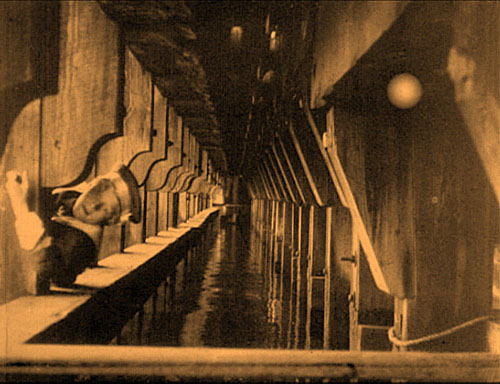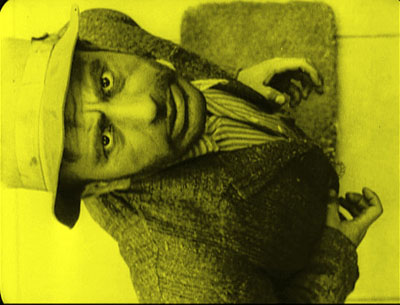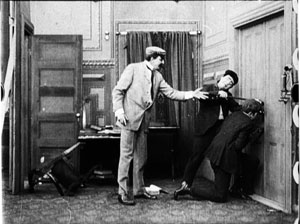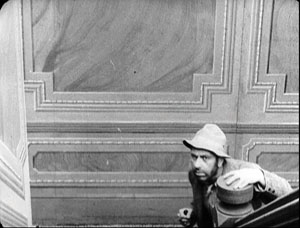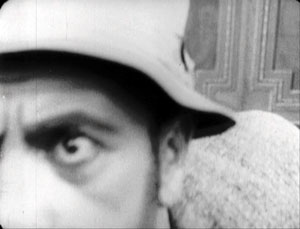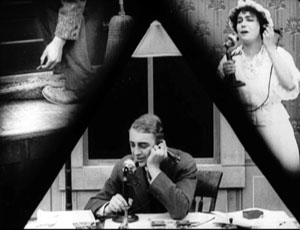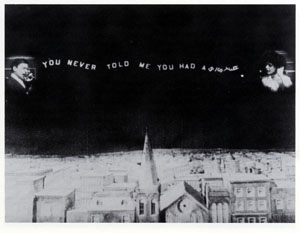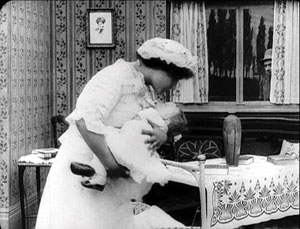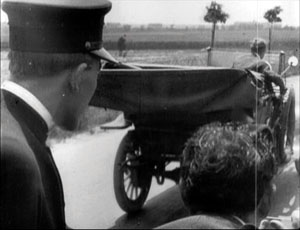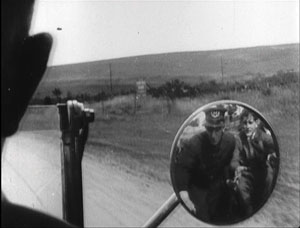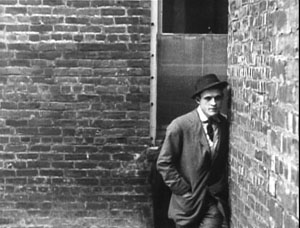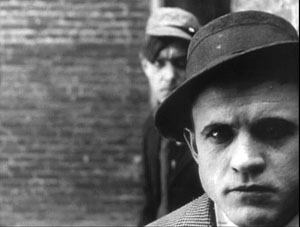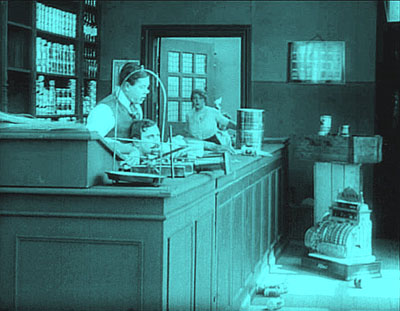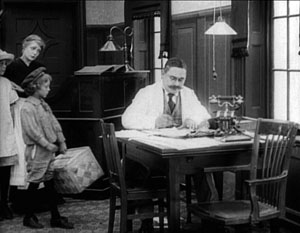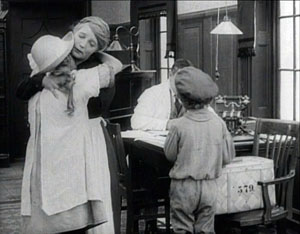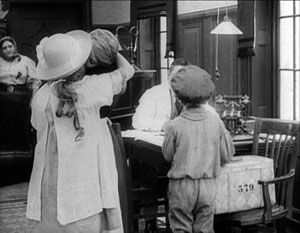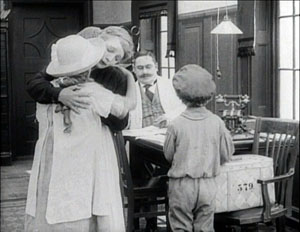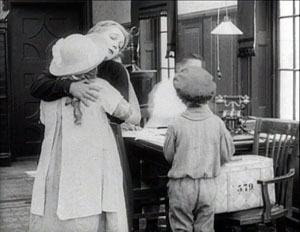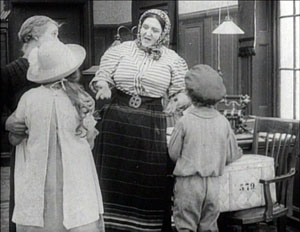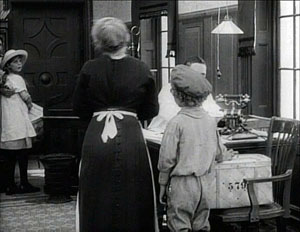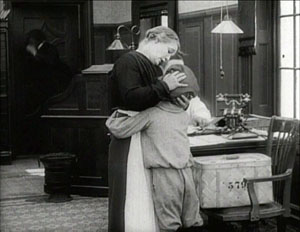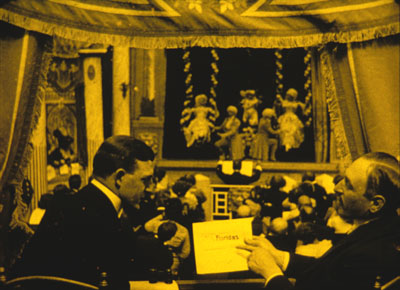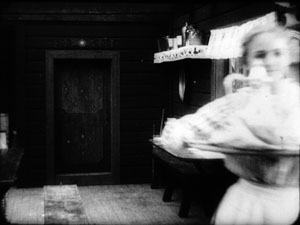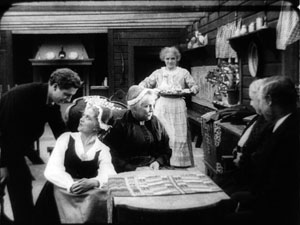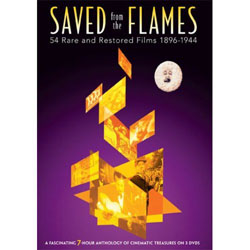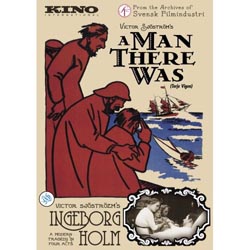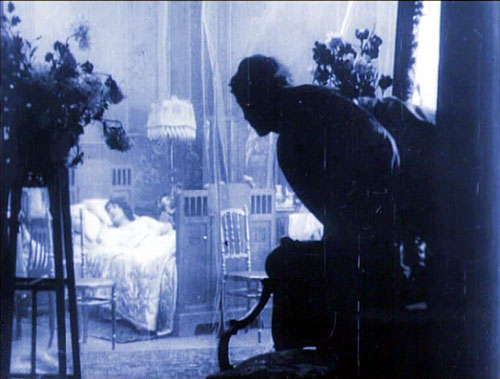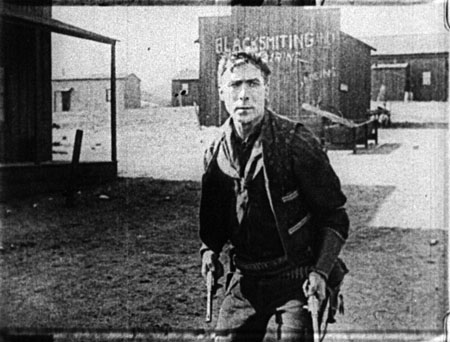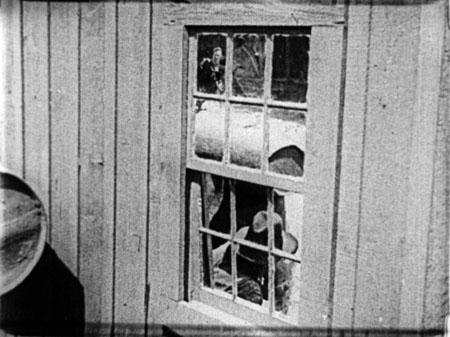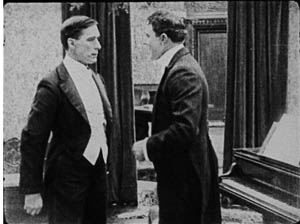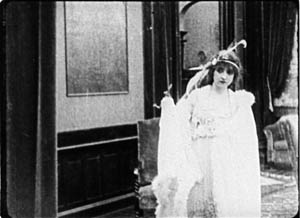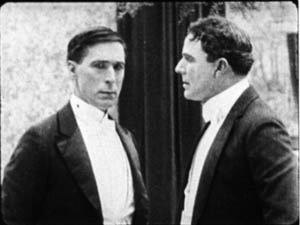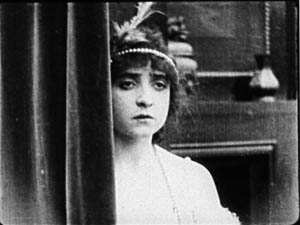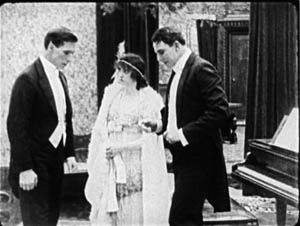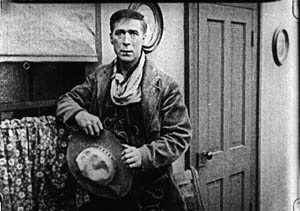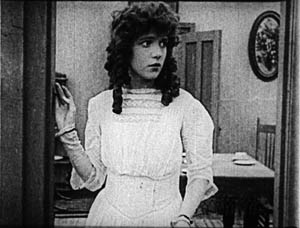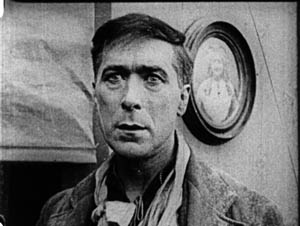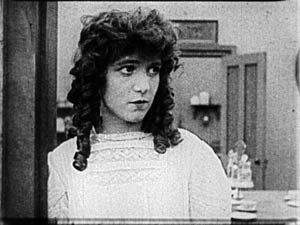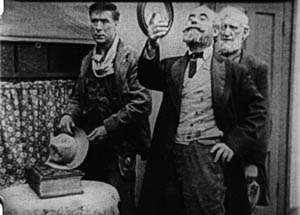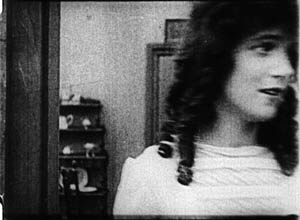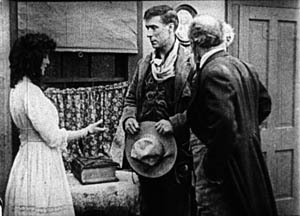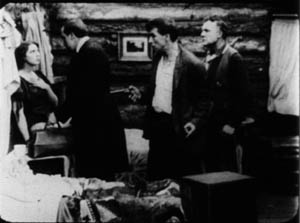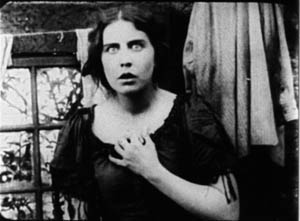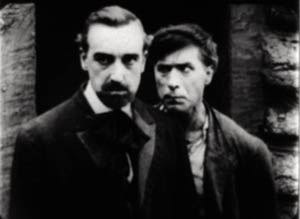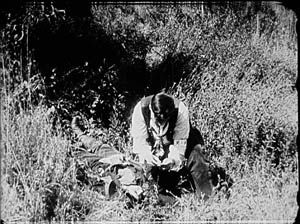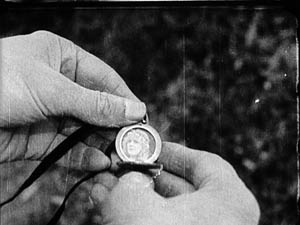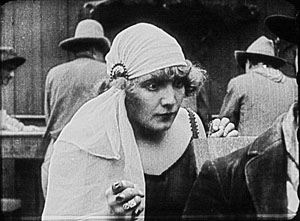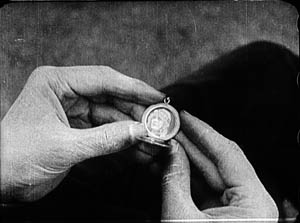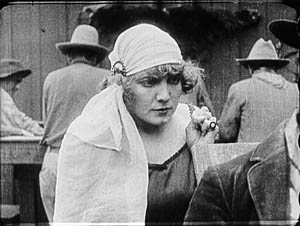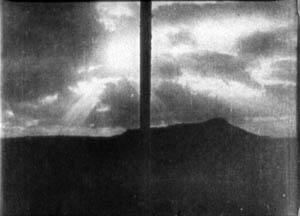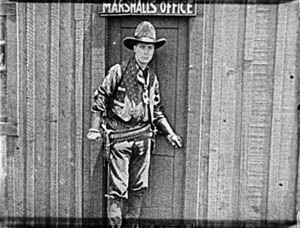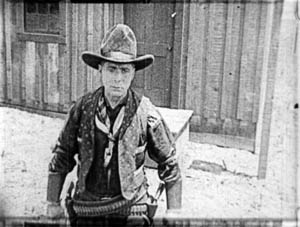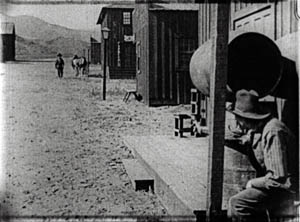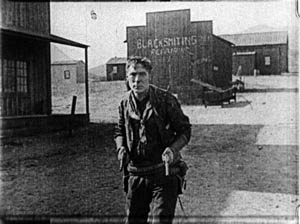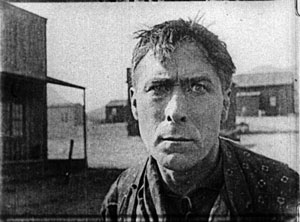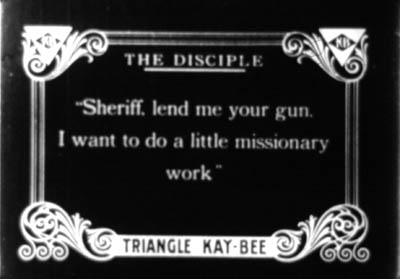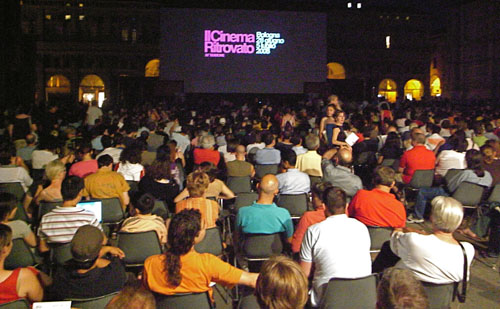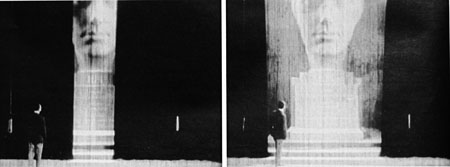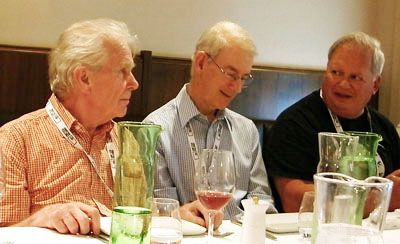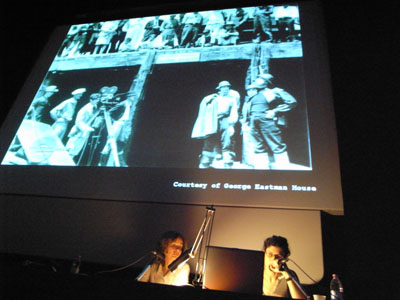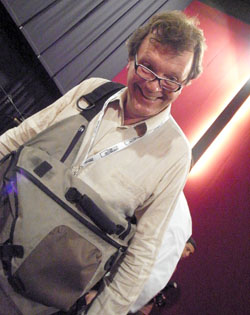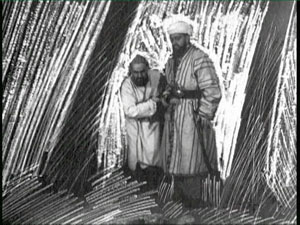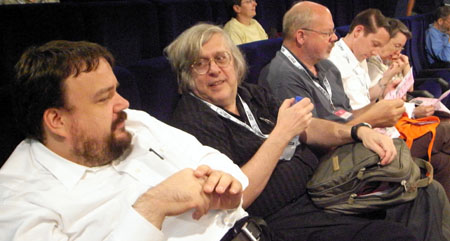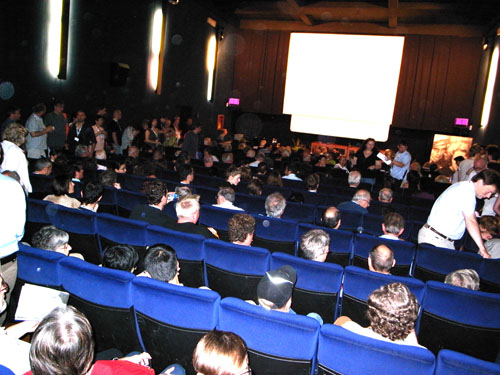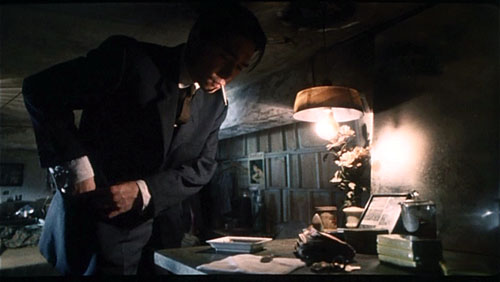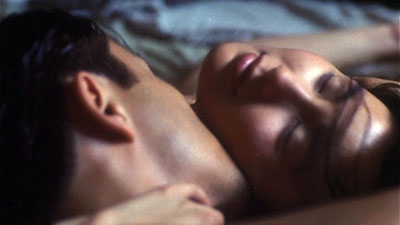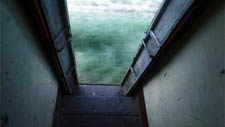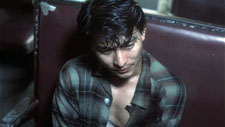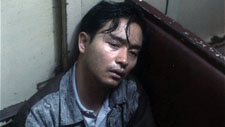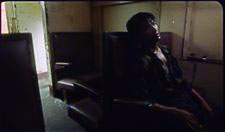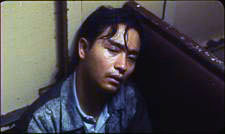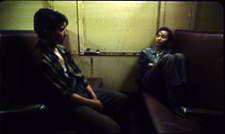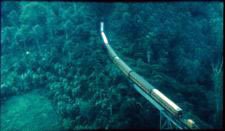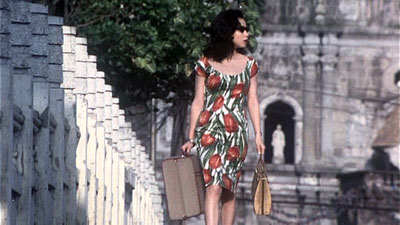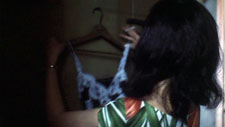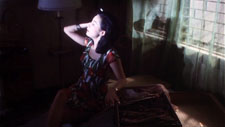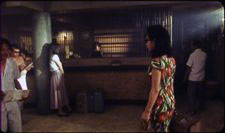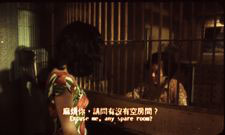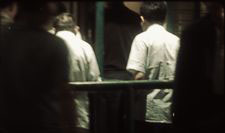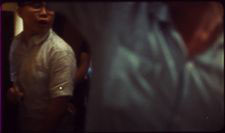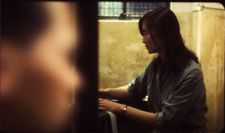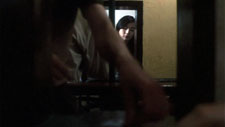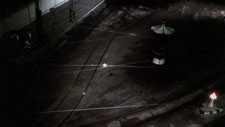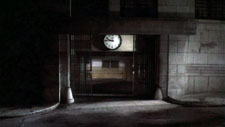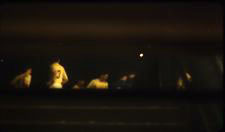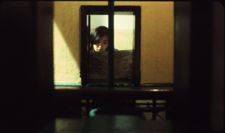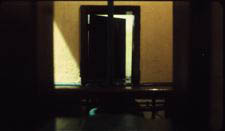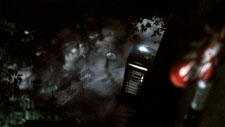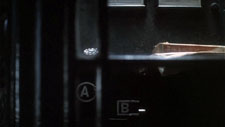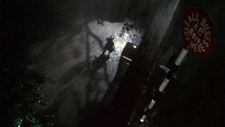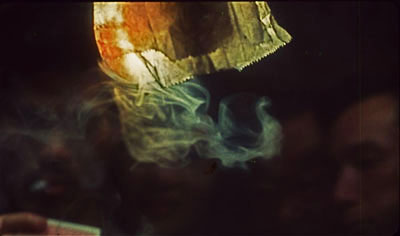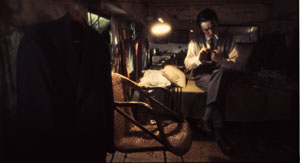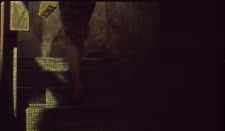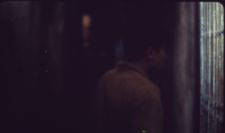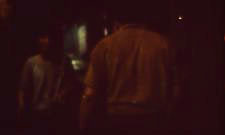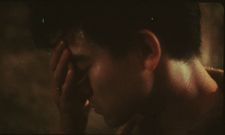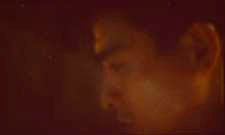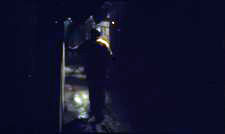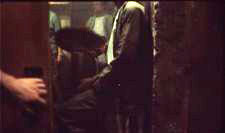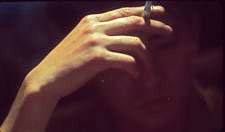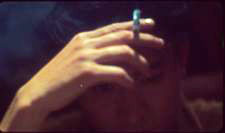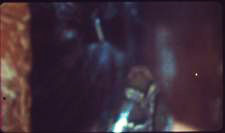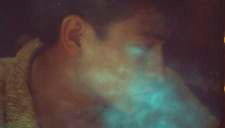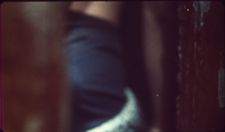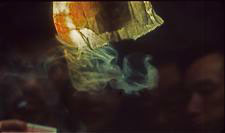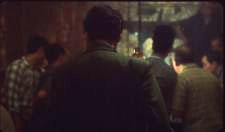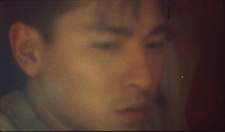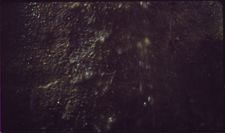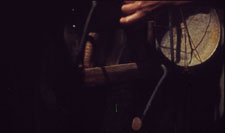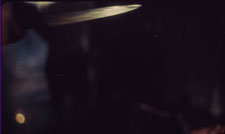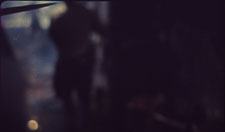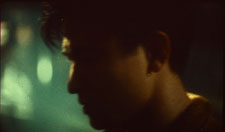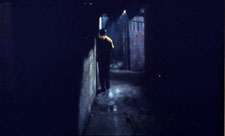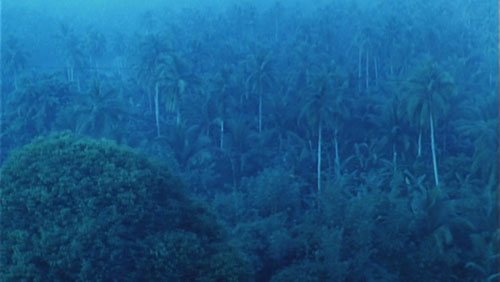Archive for the 'Film technique: Editing' Category
Lucky ’13
The Mysterious X (1913).
Each film is interlocked with so many other films. You can’t get away. Whatever you do now that you think is new was already done in 1913.
Martin Scorsese, quoted in Scorsese by Ebert (University of Chicago Press, 2008), 219.
DB here:
Most historical events don’t abide by clocks and calendars. Seldom does a trend begin neatly on one date and end, full stop, on another. Changes have vague origins and diffuse destinies. When Kristin and I, along with others, argued for 1917 as the best point to date the consolidation of the Hollywood style of storytelling, we realized that it’s a useful approximation but not as exact as a Tokyo subway timetable.
It’s just as hard to argue that a year constitutes a meaningful unit in itself. Who expects anything but tax laws to change drastically at midnight on 31 December? Yet evidently our minds need benchmarks. Film historians, while being aware that trends are slippery and dating is approximate, have long spotlighted certain years as particularly significant.
Take 1939, which has become a sort of emblem of the peak achievements of Hollywood’s Golden Age. We had Gone with the Wind, The Wizard of Oz, Only Angels Have Wings, Stagecoach, Gunga Din, Wuthering Heights, Dark Victory, Young Mr. Lincoln, Beau Geste, Mr. Smith Goes to Washington, Ninotchka, The Roaring ‘20s, and Destry Rides Again. I’d watch any of those, except Gone with the Wind, right now—something I find it hard to say about most Hollywood movies I’ve seen in 2008.
Another strong year is 1960, with La Dolce Vita, L’Avventura, Rocco and His Brothers, The Apartment, Elmer Gantry, Spartacus, Psycho, Exodus, The Magnificent Seven, Shadows, Late Autumn (Ozu), and The Bad Sleep Well (Kurosawa). Arguably, 1960 was owned by the French, who gave us Breathless, Shoot the Piano Player, Paris nous appartient, Les Bonnes femmes, Le Trou (Becker), Moi un noir (Rouch), and Letter from Siberia (Marker). (See Postscript.)
Let’s go back still further. Researchers sometimes split the silent-film period in two, with the first stretch, usually called “early cinema,” running up to 1915 or so. (1) The second phase then runs roughly from 1915 to 1928. (2) So for many historians the year 1915 functions as a tacit pivot-point, and it is remembered not only for The Birth of a Nation but also for Regeneration, The Tramp, Kindling, The Cheat, Les Vampires, Daydreams (Yevgenii Bauer), and several William S. Hart films. But another year holds a special place in the minds of silent film aficionados.
Over a decade ago, the annual Days of the Silent Cinema festival (Il Giornate del cinema muto), took 1913 as its focus. (3) It was an extraordinary year. Denmark produced Atlantis (August Blom) and The Mysterious X (Benjamin Christensen). From France we had L’Enfant de Paris (Leonce Perret), Germinal (Albert Capellani), and Louis Feuillade’s Fantomas series. Germany gave us Urban Gad’s Engelein and Filmprimadonna and Franz Hofer’s obsessively symmetrical The Black Ball. The staggering set of Italy’s Love Everlasting (Ma l’amor mio non muore!, Mario Caserini) was matched by the breadth of Enrico Guazzoni’s Quo vadis? In Russia Bauer released Twilight of a Woman’s Soul. American audiences saw Traffic in Souls (George Loane Tucker) and Death’s Marathon and The Mothering Heart, from a guy named Griffith. Several historians would argue that 1913 marked the first major achievements of film as an artform.
Two outstanding films of that annus mirabilis have recently been issued on US DVD. One is a striking accomplishment, the other a flat-out masterpiece. Both discs belong in the collections of everyone who’s serious about cinema.
Your call is important to us
A wife and her baby are alone in an isolated house when a tramp breaks in. As the wife tries to keep the invader at bay, her husband happens to telephone and learn what’s happening. He scrambles to return home. He steals an idle car, and its owner, accompanied by police, race after him. We cut rapidly between the besieged mother and the husband’s frantic drive, as he is in turn pursued. Just as the tramp is about to attack the wife, the husband bursts in, followed by the police. The family is saved.
This is the story of the 1913 one-reel film, Suspense, co-directed by Lois Weber and Phillips Smalley. If the plot sounds familiar, it’s probably because you know that one of D. W. Griffith’s most famous films, The Lonely Villa (1909) tells the same basic tale.There are still earlier versions, including one, The Physician of the Castle (Le Médécin du chateau, 1908), which may have inspired Griffith. The ultimate source seems to be a 1902 play by André de Lord, Au téléphone (translated here).
So Weber and Smalley are reviving an old idea. Their task is to make it fresh. How they do so has been studied in depth by Charlie Keil in his book Early American Cinema in Transition: Story, Style, and Filmmaking, 1907-1913.I can’t match Keil’s subtlety, and it’s better that you see the film first, so I’ll drop only some hints, pointers, and comments.
We’re inclined to say that The Lonely Villa influenced Suspense. But maybe we can capture the situation in a more illuminating way. The art historian E. H. Gombrich has suggested that we can often trace the relationship between artworks in terms of schema and revision. (4) A schema is a pattern that we find in an artwork, one that a later artist can borrow. Most often, later artists copy the schema straightforwardly. This is the usual way we think of influence. But instead of replicating the schema, the next artist can revise it. She can elaborate on it, strip it to its essence, drop parts and add others, whatever—in order to achieve new purposes or evoke fresh responses.
In The Lonely Villa, Griffith uses crosscutting to build suspense. He cuts among the thuggish vagrants trying to break in, the wife and daughters trying to hold them off, and the father learning by phone of the situation and then plunging after them with a policeman. The obvious pattern here is the principle of alternation between different lines of action, all taking place at the same time and converging in a last-minute rescue.
So Smalley and Weber inherit the crosscutting schema, but they go beyond simply copying it. They find ways to revise it, some quite surprising. These revisions aim to create more tension and to dynamize the situation.
The obvious option, at least to us today, would be to use more shots than Griffith does; we think that increasing the cutting pace builds up excitement. Interestingly, however, Suspense uses only a couple of more shots than The Lonely Villa within a comparable running time. (5) We usually expect that American films become more rapidly cut as the 1910s go on, but this isn’t the case here. Shortly, I’ll suggest why.
Smalley and Weber recast Griffith’s parallel editing in several ways. For instance, The Lonely Villa prolongs the phone conversation between husband and wife, building suspense through the husband’s instruction to use his revolver on the thugs. Suspense, by contrast, doesn’t dwell on the telephone conversation but devotes more time (and shots) to the chase along the highway. That’s because Weber and Smalley have complicated the chase by having the husband pursued by the irate motorist and the police, something that doesn’t happen in the Griffith film.
Just as important, Smalley and Weber revise the crosscutting schema through framings that are quite bold for 1913. For example, Griffith’s tramps break into the house in long shot, and they move laterally across the frame.
But Weber and Smalley’s tramp sneaks steadily up the stairs, into a menacing extreme close-up.
Elsewhere, Suspense gives us close views of the wife and of the door as the tramp breaks in. There are oblique angles on the back door of the house, and virtually Hitchcockian point-of-view shots when the wife sees the tramp breaking in and he looks straight up at her.
What struck me most forcibly on watching the film again was the way in which Weber and Smalley’s daring framings serve as equivalents for parallel editing. In effect, they revise the crosscutting schema by putting several actions into a single frame. The most evident, and the most famous, instances are the triangulated split-screen shots. They cram together three lines of action: the wife on the phone, the husband on the phone, and the tramp’s efforts to break into the house (here, finding the key under the mat). (6)
Split-screen effects like this were common enough in early cinema, especially for rendering telephone conversations. Eileen Bowser points out that the three-frame division was one variant, with a landscape separating the two callers. (7) Her example is from College Chums (1907).
But my sense is that in early cinema the split-screen effect was used principally for exposition or comedy, not for suspense. Smalley and Weber have made this framing substitute for crosscutting: instead of giving us three shots, we get one, showing the plot advancing along different lines of action. These splintered frames function much like Brian De Palma’s multiple-frame imagery in Sisters, Blow-Out, and other films. There’s also the nice touch of the conical lampshade over the husband’s head, providing a fulcrum for the composition.
Earlier in the film, instead of crosscutting between the tramp outside and the wife indoors, Suspense gives us both in the same shot, with the tramp peeking in behind her.
A more ingenious revision of the crosscutting schema comes during the shots on the road. Instead of cutting between the father in the stolen car and the police pursuing him, Suspense packs them into the same frame. This is done not only in long shot but also in striking depth compositions.
Flashiest of all are the shots showing the pursuers reflected in the rear-view mirror of the father’s car as he races ahead of them.
Again, a single framing has done duty for two shots, one of the father looking back and another showing the cops coming closer to him. By compressing several lines of action into a single frame, our 1913 film doesn’t need to use significantly more shots than the 1909 one.
These are just a few of the imaginative ways in which Weber and Smalley have recast their standard situation. I could have considered as well the unobtrusive use of the knife as a multi-purpose prop, the echoed shots of mirrors, and the shrewd employment of repetitions in the intertitles.
It would take an early-cinema specialist like Keil to trace out all the connections between Suspense and other films of its era. One among many would be the fact that Griffith wasn’t exactly standing still between 1909, the year of The Lonely Villa, and 1913. For instance, his Battle at Elderbush Gulch, made about the same time as Suspense (though released in 1914), displays far more rapid cutting than Weber and Smalley attempt. Griffith also employed a swelling advance to the foreground, like that of the tramp shot I showed above, in The Musketeers of Pig Alley (1912).
Here, Smalley and Weber seem to have replicated a schema that was believed to ratchet up tension, the so-called looming effect.
The very title of the film exhibits self-consciousness about its artistic purpose. By 1913, it seems, American filmmakers were confident enough in their skills to announce their aims. We want, the title seems to say, to arouse you, to make you wait, hanging there, for the resolution. We know how to tell a twelve-minute story cinematically. The film seems uncannily to anticipate all those one-word titles that Hitchcock invoked to unsettle us–Suspicion, Spellbound, Psycho, Frenzy. As in a Hitchcock movie, the fact that we are pretty certain how Suspense will turn out doesn’t seem to dissipate our anxiety. (For more on this paradox of suspense, see this entry.)
Tunnel vision
It was during the Pordenone 1913 season that the full brilliance of Victor Sjöström’s Ingeborg Holm hit me. I had seen the film a couple of times before and found it deeply moving in its restrained treatment of a poignant situation. The film traces the dissolution of a family. Sven Holm is doing a brisk retail business, but his health problems, along with a thieving clerk, plunge the family into poverty. When Holm dies, his wife Ingeborg must take the children into the poorhouse, and from there they are boarded out to foster families. Her plight worsens over the years, and its sorrowful depths are revealed when her son, now grown, returns to visit her.
Ingeborg Holm has long been recognized as a milestone in European film, not least for its effect on improving Sweden’s treatment of the poor. (8) The acting style is muted and delicate, with no mugging or arm-waving. For long periods, the main actors turn from the audience. (9) Just as impressive are the poised compositions, sustained in unhurried long takes. These give what is essentially a bourgeois tragedy a kind of majestic relentlessness. Watching, I remembered what Dreyer had admired in Sjöström’s Ingmar’s Sons (1918):
The film people here at home shook their heads because Sjöström had really a boldness to let his farmers walk heavily and soberly as farmers do. Yes, they used up an eternity to come from one end of the room to the other. (10)
But sitting in the Cinema Verdi in 1993, I spotted yet another level of artistry. Knowing the story of Ingeborg Holm, I was able to watch the shots unfold. I could study how Sjöström was unobtrusively moving characters so that they became shifting centers of interest. Although he didn’t cut in to close-ups, he harmonized his actors’ movements so that at one point you noticed Ingeborg, at another her husband. Performers spread themselves across the frame, arrayed themselves in depth, turned from or toward the camera. Most subtly of all, one actor might mask another one, driving our attention to other parts of the frame. Sjöström could sustain this intricate play of blocking and revealing for minutes on end.
My favorite example of this tactic is the three-minute passage showing Ingeborg’s daughter and son taken away by new mothers. You can read the whole discussion on pp. 191-195 in On the History of Film Style (1997), but here is an excerpt, with stills intercalated. (These stills, grabbed from the DVD, lack a little on the left. The film has been printed and reprinted so many times, and now fitted to the TV monitor, that it has lost some information along that edge.)
Ingeborg’s entry with her children from the rear doorway establishes the trajectory that will be followed during the scene, as foster mothers come in and take away the children. (Again, the scene is built around movements toward and away from the camera.) In a brilliant stroke, Sjöström immediately plants the young son in the foreground, back to us. The boy will stand there immobile for this first phase of the scene, occasionally serving to block the superintendent.
Ingeborg buries her face in her daughter’s shoulder at the precise moment the foster mother enters from the rear left. She passes behind Ingeborg, and as she is momentarily blocked, the superintendent twitches into visibility, handing the woman a document to sign.
During the signing, when the woman is briefly obscured, the superintendent shifts position again and Ingeborg lifts her face once more. Then Ingeborg and her daughter move slightly leftward as the foster mother comes forward.
This phase of the scene concludes with the departure of the daughter and the embrace of Ingeborg and her son in the foreground, once more concealing the superintendent.
Granted, I picked one of the film’s most exactingly staged scenes, but there are several other examples. Consider the climax, when the adult son comes to visit Ingeborg: the camera position and staging ask us to recall the scene I’ve just mentioned. Or take a look at the handling of the space behind the counter in the various scenes in the Holms’ shop. One instance surmounts this section.
This choreography is hard to catch on the fly: by the time you notice a change, what prepared for it has gone. To understand the overall dynamic, we must reverse-engineer the effects, moving backward from the result to the conditions. As I studied the film, it became clear that creating shifting centers of interest was basic to the scenes’ effects. All the finesse of acting, both solo and ensemble, would come to little if we weren’t primed to watch the most important area of the shot. Directors of the 1910s became supremely skilful in guiding our eye from one major story point to another within the fixed frame.
Some of the tactics of guiding our attention could be borrowed from other arts. Painting and theatre supplied certain schemas, like placing an item in the center of the picture format and turning faces toward the viewer. But some tactics for directing our eye relied on capacities that were as “specifically cinematic” as cutting was argued to be. Theatre is staged for many sightlines, but cinema is staged for a single one, that of the camera lens. That fact allowed directors to organize the unfolding action in depth, prompting the viewer to notice things at many distances from the camera.
It also allowed a precise blocking and revealing of information that would not work on the stage. In a live theatre performance, the slight shifts we detect in the Ingeborg Holm scene would be apparent to only very few viewers; people sitting in other vantage points wouldn’t see them. For another example of this phenomenon, go elsewhere on this blogsite.
There’s a more basic explanation of what’s going on. Cinematic space is a result of optical perspective, like the space of classic painting. The actors may seem to be standing in a cubical space, but in fact they move within a tipped-over pyramid, with the tip resting at the camera lens. They work inside a ground area that’s the shape of a slice of pie. Here’s a reminder from The Black Ball.
When there are figures close to the camera, as here, they fill up more of the frame, indicating that the field of view has narrowed. Filmmakers of the 1910s had discussed this property of their “cinematic stage,” so as researchers we can confirm that the control of position and timing we observe on screen results from the firm intentions of the makers. They might have echoed Uccello, the Renaissance artist who bent over his drawings late at night and exclaimed: “How sweet a thing is this perspective!”
Suddenly the tableau tradition made sense to me. Directors had to organize both the two-dimensional composition and the tapering three-dimensional playing space in front of the camera. The purpose was to create ever-changing centers of interest, laterally and in depth, flowing along with the key moments in the unfolding action.
By studying the same tactics in Feuillade, Bauer, and others, I found that these principles offered a fruitful way to understand much of what was happening in the films of the tableau era. The dynamic of schema and repetition/revision was at work as well, since I found earlier, more rudimentary uses of these principles; these were then refined during the 1910s. Moreover, the idea helped me generalize beyond that era and analyze later directors, including Mizoguchi Kenji and Hou Hsiao-hsien, who also used staging to shape the viewer’s experience. The results can be found in On the History of Film Style and Figures Traced in Light. Those books largely owe their existence to that flash of awareness kindled by Ingeborg Holm. (11)
We can’t reconstruct Sjöström’s stylistic development with much confidence. (12) His first directed film, The Gardener (Trädgärdsmästaren, 1912) survives, but I saw it before I knew how to watch 1910s movies in this way, so I can’t comment on it. Of the twenty-six films he made from 1912 to 1917, nearly all have been lost. Apart from Ingeborg, I have managed to see Havsagamar (The Sea Vultures, 1916). This retains aspects of the tableau tradition, but virtually no scenes display the intricate staging of his 1913 masterpiece.
In the late 1910s, judging by the films we have, Sjöström seems to have moved quickly toward continuity editing in the American vein. (13) The Girl from Stormycroft (Tösen frän Stormyrtorpet, 1917) contains extended passages of analytical editing, and the scenes display a freedom of camera setup one seldom sees in European cinema of the period. Sjöström clearly understands the principles of continuity down to the smallest detail. For instance, he not only uses the frame-edge cut (the cut that lets a character exit one shot and enter another, as the body crosses the frameline); he accelerates it. Our heroine leaves the kitchen, and in the shot’s final frame she hits the right edge. Another director would have had her exit the frame entirely and held the kitchen shot a little longer, to give her time to get to the next room. But Sjöström simply cuts to her already in another room, completing her trajectory.
Sjöström presumes that the constant pace of her approach and the vector of her movement will smooth the shot-change. It does, but few directors of that day would had such confidence that our mind would create continuity of motion.
During this summer’s archive viewing, I spent some time studying Sjöström’s cutting in The Girl from Stormycroft and subsequent films. I may offer some more thoughts later. For now I’ll just say that in these early years we seldom encounter such a versatile director, one who mastered the tableau tradition and then moved, with apparently little effort, to nuanced continuity editing. More generally, examining his technique isn’t a dry exercise. We never lose by studying craftsmanship. Sjöström’s films succeed because his style carefully guides our moment-by-moment apprehension of the heart-rending stories he has chosen to tell.
Have I convinced you to surrender your credit-card number? Suspense is available in a dazzling Flicker Alley collection, Saved from the Flames, compiled from the French series Retour de flame. Ingeborg Holm comes with a tinted print of the estimable Terje Vigen (A Man There Was) on a DVD from Kino. The latter disc includes vibrant scores from Donald Sosin and David Drazin.
(1) For the purposes of the outstanding Encyclopedia of Early Cinema (New York: Routledge, 2005), the editor Richard Abel considers that the early cinema constitutes the period from film’s invention ca. 1894 to the mid-1910s.
(2) Silent films were still made into the 1930s, notably in Russia and Japan—a situation that shows the rough-and-ready quality of period divisions.
(3) For an informative series of articles around the 1913 theme, see Griffithiana no. 50 (May 1994).
(4) Gombrich proposes these ideas at various points in Art and Illusion: A Study in the Psychology of Pictorial Representation, new ed. (Princeton: Princeton University Press, 2000). The book is a milestone in twentieth-century humanistic inquiry.
(5) The Lonely Villa (1909) has, in the version I’ve seen, 54 shots in a 750-foot reel (that is, about twelve and a half minutes at 16 frames per second). Suspense has nearly the same number of shots, 56, in about the same running time.
(6) Sharp-eyed readers will recognize one of these shots as Fig. 5.82 in Film Art: An Introduction, 8th ed. (New York: McGraw-Hill, 2008), 187.
(7) Eileen Bowser, The Transformation of Cinema 1907-1915, vol. 2 of History of the American Cinema (New York: Scribners, 1990), 65.
(8) For more background on the film, see Jan Olsson, “‘Classical’ vs. ‘Pre-Classical’: Ingeborg Holm and Swedish Cinema in 1913,” Griffithiana no. 50 (May 1994), 113-123.
(9) Kristin wrote about this technique in “The International Exploration of Cinematic Expressivity,” in Film and the First World War, ed. Karel Dibbets and Bert Hogenkamp (Amsterdam: Amsterdam University Press, 1995), 65-85. She also discusses it in our Film History: An Introduction, 2d ed. (New York: McGraw-Hill, 2002), 67.
(10) Carl Dreyer, “A Little on Film Style,” Dreyer in Double Reflection, ed. and trans. Donald Skoller (New York: Dutton, 1973), 133.
(11) I was probably primed for this by lectures presented by Yuri Tsivian, who has long been studying mirrors in 1910s cinema and calculating how they revealed offscreen space.
(12) Detailed information on Sjöström’s relation to the film industry in these years can be found in John Fullerton’s epic Ph. D. thesis, The Development of a System of Representation in Swedish Film, 1912-1920 (University of East Anglia, 1994). See also Fullerton, “Contextualising the Innovation of Deep Staging in Swedish Film,” Film and the First World War, ed. Dibbets and Hogenkamp, 86-96.
(13) Several people have analyzed Sjöström’s editing. Ben Brewster and Lea Jacobs’ Theatre to Cinema: Stage Pictorialism and the Early Feature Film (Oxford: Oxford University Press, 1997), 133-136 shows how cutting supports the acting in a crucial scene of Ingmar’s Sons. Tom Gunning’s essay “‘A Dangerous Pledge’: Victor Sjöström’s Unknown Masterpiece, Mästerman,” in John Fullerton and Jan Olsson’s anthology Nordic Explorations: Film before 1930(Sydney: John Libbey, 1999), 204-231, argues that Sjöström’s cutting gives his characters a degree of psychological opacity. Most recently, in an unpublished paper Jonah Horwitz discusses patterns of performance, composition, and editing in Terje Vigen (1917).
Twilight of a Woman’s Soul (1913).
PS 31 August: Some corrections. David Cairns writes to point out that the triangle at the top of the frame in the Suspense split-screen isn’t a lamp but simply the shade behind the father’s head, cropped by the masking. Wishful thinking on my part, I’m afraid. By the way, David has an intriguing movie giveaway going on his site.
Roland-François Lack corrects dates on two of my Greatest French Hits from 1960: “The great Marker from that year is Description d’un combat, not Lettre de Sibérie (1958), and likewise Rouch’s Moi un noir is from 1958.” Thanks to him and David. To my original list, I should probably have added Cocteau’s Testament d’Orphée, released in 1960.
Rio Jim, in discrete fragments
The first moving-pictures, as I remember them thirty years ago, presented more or less continuous scenes. They were played like ordinary plays, and so one could follow them lazily and at ease. But the modern movie is no such organic whole; it is simply a maddening chaos of discrete fragments. The average scene, if the two shows I attempted were typical, cannot run for more than six or seven seconds. Many are far shorter, and very few are appreciably longer. The result is confusion horribly confounded. How can one work up any rational interest in a fable that changes its locale and its characters ten times a minute?
H. L. Mencken, 1927
DB here:
Between about 1913 and 1920, the way movies looked changed, and we are still living with the results. What were the changes? What brought them about?
I’m just back from Brussels, after a two-week visit to the archive. During earlier trips, I’ve concentrated on examining films from the 1910s that exemplify the tableau tradition. That’s what we might call the stylistic approach that tells the story and achieves its other effects predominantly through staging—by arranging the actors within the frame, forming patterns that reflect what is important at a given moment.
The tableau tradition dominated European cinema of the early and mid-1910s, and it was also on display in the U. S. It is sometimes considered “theatrical” and “uncinematic,” but that’s a shortsighted view. The tableau tradition is one of the great artistic triumphs of film history. For backup on this, consult Ben Brewster and Lea Jacobs’ Theatre to Cinema and my On the History of Film Style and Figures Traced in Light. And you can go here and here on this site.
As the 1910s moved on, the staging-driven approach gave way to one dominated by editing. Roughly speaking, this strategy surfaced at two levels. Directors began to use crosscutting, aka parallel editing, more strenuously. By alternating shots, you could show events taking place at two or more locations. This technique was not used only for last-minute rescues; it was a way of keeping track of all the characters in nearly every sequence, whether they were going to converge or not.
Second, within a single strand of action, 1910s directors exploited analytical editing, breaking down a scene’s space into a host of details. Griffith often gets the credit for this tactic (and he happily claimed to have invented it), but it’s probably most fairly understood as a collective innovation.
Directors in the tableau tradition didn’t entirely avoid crosscutting or analytical editing, but there was a measurable shift of gravity in the second half of the 1910s. In the U.S., many filmmakers pushed editing techniques very hard. You can sense their exhilaration in discovering how editing lets them control pacing, make story points concisely, build suspense, and force the viewer to keep up.
During the 1910s, American movies became breathless. The hurtling pace of Speed Racer or The Dark Knight has its origins here; seen today, The Battle at Elderbush Gulch (1913) and Wild and Woolly (1917) still look mighty rapid-fire. And then as now some observers, like Mencken, complained that it was all too fast and furious.
Over the last thirty years, many scholars have studied this change, but for a glimpse of some supporting data, you can visit the remarkable website Cinemetrics. Yuri Tsivian, Barry Salt, and a corps of volunteer scholars have been measuring Average Shot Lengths in films from all eras. The data from the 1910s are pretty unequivocal. In the US around 1916-1918, movies became editing-dominated, shifting from an ASL of over 10 seconds, sometimes as much as 30 seconds, to 5-6 seconds or less. A 4-6 second average per shot persists in Hollywood through the 1920s, so Mencken’s guess about the “scenes” (as shots were then known) changing ten times a minute was more or less right.
Back in the 1980s, Salt and others, including Kristin and me, picked 1917 as a plausible point of reference for the consolidation of the continuity style. That was the point at which virtually every US film we watched contained at least one example of specific continuity techniques. (Most contained many more instances, of course.) We talk about that magical year in this entry, which you might want to read as an introduction to what follows today.
In just a few years, continuity editing became a coherent, supple means of expression, and it has defined Hollywood film style up to the present. What brought this about? Kristin and Janet Staiger offered an explanation in our 1985 book, The Classical Hollywood Cinema: Film Style and Mode of Production to 1960. They traced out several factors that encouraged and sustained this style. Especially important were the development of longer films, a conception of filmic quality, and the emergence of a specific division of labor.
Lately I’ve been revisiting these early years, chiefly to watch how directors pick up and refine the stylistic schemas that were coming into broader use. I want to know more about the little touches that directors had to control in creating this style. I’ve also been interested in to what extent these techniques were picked up by directors in Europe and Asia. The evidence is pretty clear that continuity cinema became a lingua franca of film style.
So if last year I pondered the minute compositional adjustments of Evgenii Bauer, this year it was all cutting. I focused on three filmmakers, but I’ll save discussion of two of them for a rainy day, or a book. In all, it was a thrill, as ever, to watch a stylistic system coalesce across a batch of films that are seldom mentioned in the history books.
The trail to continuity
The extraordinary films starring William S. Hart typify early American continuity techniques. After a distinguished career on the stage, Hart began as a film actor in 1914, when he was nearly fifty. He was intent on bringing realism to the newly burgeoning Western genre. His films were at first made under the auspices of Thomas Ince, a pioneer of rationalized production techniques, and with his Ince pictures Hart found worldwide success. He followed a rousing feature debut (On the Night Stage, 1915) with many shorter films. In 1917—mark the year—Hart broke with Ince and set up his own firm for The Narrow Trail. He continued to make films into the early 1920s, with Tumbleweeds (1925) marking his farewell to cinema.
Hart often directed his own pictures, though he also had the services of strong directors like Reginald Barker. The films have an assured brio, thanks to careful cutting and some felicitous touches.
They are fast-moving: In the five 1915 Hart films I watched, the ASL ranged from 8 to 11 seconds, but in 1916, the average jumped to 5-6 seconds per shot. The Narrow Trail seems to have an ASL of 3.7 seconds, but I can hardly believe it and I must verify it with another viewing. The 1918 and 1920 films I viewed average between 4.9 and 5.4 seconds per shot.
Just as important as the speed of cutting, naturally, is what Hart does with his cuts. In one scene from Between Men (1916), you can see the tableau aesthetic undermined by analytical editing. Gregg is a shifty stock trader, a species we still nurture. He’s trying to destroy Hampton’s fortune because he thinks that when the old man is destitute he’ll force his daughter to marry Gregg. Hampton has asked Bob White (Hart) to help get the goods on the suitor.
In one scene, the master shot approximates a tableau setup: Bob and Gregg stand in the middle ground, with a room visible behind them.
As the men swap increasingly tense challenges, Margaret Hampton enters the adjacent room and stands behind them as they talk. A director in the tableau tradition would have sustained the master shot and shown Margaret approaching in the background and drawing closer, reacting to what the men say. She could easily have been stationed hovering at the curtain on the right.
Instead, director C. Gardiner Sullivan has her arrive from another doorway in the adjacent room, one not visible in the master shot of the two men. He then cuts back and forth between the men and Margaret, and he positions her at the left curtain–so that the men block her from our view! The blockage motivates cutting to Margaret for her reactions to what Bob and Gregg say.
Only when she wants to challenge Bob’s suggestion that he might marry her does Margaret come into the same frame as the men, who part to make room for her.
It turns out that this sequence is but a rehearsal for a lengthier passage in which Hampton will come in from the adjacent room (via the door we do see in the background). As with Margaret’s entrance, his arrival will be blocked by Gregg’s body, and Sullivan will cut among the trio in the foreground and Hampton’s approach behind them. That passage, which could also have been handled in a single framing in the tableau style, consists of four distinct setups and eighteen shots!
So even depth-based scenes can be recast as rapid découpage. The passage is probably overcut, but you can sense the filmmakers’ exhilaration in their power to chop up the world into separate, slightly jolting bits, forcing the audience to keep abreast of each item of information.
Managing details
The variety of setups is worth noticing in another film, for here we can see the filmmakers taking pains to show each bit of action most clearly and emphatically. In The Return of Draw Egan (1916), when Egan sees the mayor’s daughter Myrtle he decides to stay on as marshal of Yellow Dog. The first shots show them looking at each other.
The next pair of shots shows the two looking at each other in close-up.
This gradual enlargement of the figures in a reverse-shot sequence would of course become a staple of analytical editing—perhaps it already was in 1916. Cut back to another framing of Egan, as the mayor signals Myrtle to join them. The slightly off-center composition reiterates her position off left.
Cut back to Myrtle, exiting her close-up. The next shot shows her joining the men, to be introduced to Egan.
But this is a different camera position than the one showing the men just previously. The daughter’s entrance has motivated a slightly changed composition. In the 1910s, cutting began to dictate staging, so that each composition had to fit smoothly into the flow of shots.
This sequence from Draw Egan doesn’t utilize axial cuts, those cuts that keep to the same angle and move straight in or out. Here the actors are angled to suggest that we are to some degree in between them. Indeed, sometimes the camera will put us directly between the characters. Here is a climactic confrontation from The Disciple (1915). A doctor has cuckolded Hart, but Hart brings him to save his daughter. As the doctor enters, the wife’s shameful look is met by Doc’s anxious expression, with a furious Hart pressing a pistol to his back.
This freedom of camera placement extends to point-of-view cutting. Again, this is an old technique, but like other old techniques, it was revived and refined as part of the synthesis that became the continuity style. So Keno Bates, Liar (1915; a splendid title) can make use of a cameo picture that captivates Bates after a shootout with the man who robbed him.
Later, the dance-hall girl catches sight of her rival when Bates muses on the cameo.
The pov framings don’t change much, but the angle chosen easily approximates both Bates’ view and her view over his shoulder. Moreover, the shot of Bates’ hands isn’t the sort of vacuous insert we often see at the period, with a letter or an object isolated against a blank ground. Here, the backgrounds change, so that the first shot is situated naturally in the wild, while the second is consistent with the barroom locale.
Putting the pieces together
From very early in the history of Westerns, the main street shootout seems to have been a solid convention. Already in The Return of Draw Egan, it’s treated with a vitality and ingenuity that suggests creative reworking of a staple. The climactic shootout also shows just how flexible the new technique could be.
Egan has told his enemy, Arizona Joe, that he’ll meet him when the setting sun’s rays hit the saloon window. So the film crosscuts Egan in his marshal’s office with a nervous Joe, seen in close-up, eyeing the window.
When Joe gets up the nerve to leave, he hides behind a barrel and waits to ambush Egan. When Egan leaves his office, a reverse tracking shot follows him striding toward us.
Then we get an orienting long shot with Joe in the foreground and Egan approaching.
Edging sideways, Egan spots a reflection of Joe’s head in a window. These shots surmount today’s blog entry. You can see Egan’s reflection in the upper left pane.
Now aware of Joe’s tactic, Egan steps diagonally forward, coming ominously right up to the camera.
He fires and dispatches Joe. The townsfolk, who have been huddled in a house watching, declare they want Egan to stay on as marshal, despite his outlaw past. Myrtle chimes in, and we get a happy ending. Chaotic fragments? Mencken couldn’t have been more wrong. Or maybe he was just being grumpy.
The trail to Hollywood
There’s plenty more in these films—beautiful, sometimes minuscule matches on action; subtle timing of frame entrances and exits; and even proto-over-the-shoulder reverse shots. And we don’t have to claim that Hart’s films are the only innovative ones. They take their place within a broader, collective achievement that we still haven’t fully grasped.
Editing permitted everyone to act at small scale; the bargirl who sees Bates’ cameo need only lower one fist, tighten the other, and narrow her eyes to express her jealousy. The new style nurtured laconic stars like Hart. His films are full of pathetic situations that demand he display stoicism but also sensitivity. The long shots could emphasize his gestures and stances, while close-ups could display his worn, haunted face and pale eyes. He acts with those eyes, glancing aside to recall a traumatic event or looking downward as he hesitates to break bad news. Often the plot demands that he conceal his feelings or hide the truth behind an event, and the changing shots could penetrate the surface drama and highlight his slightest reactions. Hart could underplay his role because the editing shows us everything he might have said.
Known in France as Rio Jim, Hart was very influential on the Europeans. His pictures, along with De Mille’s The Cheat (1915) and the films of Chaplin and Fairbanks and many others, offered tutorials in the new style. Arguably, the cumulative force of these mainstream releases was greater than the influence of Griffith’s more prestigious output of the moment. There was only one Intolerance (1916), the film by which Griffith was most widely known abroad, but week by week the Westerns and comedies and dramas pouring out of Hollywood flaunted a new, almost frighteningly energetic approach to cinema.
Timing favored the Americans. The style emerged at around the start of World War I, when hostilities gave U. S. films a chance to displace the big French and Danish companies in many markets. Kristin explains how this happened in Exporting Entertainment, and she talks about the exceptional case of Germany in Herr Lubitsch Goes to Hollywood.
Some European directors picked up the new style immediately, others took a bit longer, and a few, like Feuillade, never fully adjusted to it. The principles of the older tableau style never utterly died out, as I try to show in Figures Traced in Light. But the future belonged to the editing-based aesthetic. Canonized, tweaked, updated, dismantled, undermined—however filmmakers reacted to classical continuity, it became the basis of international cinematic storytelling.
My epigraph comes from H. L. Mencken, “Appendix from Moronia: Note on Technic,” from Prejudices: Sixth Series (New York: Alfred A. Knopf, 1927), rep. in Phillip Lopate, ed., American Movie Critics: An Anthology From the Silents Until Now, expanded edition (New York: The Library of America, 2006), 35-36.
Silent film speeds can vary, so shot counts can yield different averages. I saw some of the Harts I mention in projection at last year’s Il Cinema Ritrovato, and they were projected at 18 or 19 frames per second, a common speed for the period. My ASLs are based on the running time. For the titles I saw in Brussels on a flatbed viewer, my basis was the length in meters. From that I’ve calculated running times and averages, assuming 18 frames per second. Projectionists of the time had freedom to screen at different speeds, so it’s possible that late 1910s Hart films were sometimes shown at 20 frames per second, which of course would make their cutting pace even faster.
For more on Hart’s career, see Diane Kaiser Koszarski, The Complete Films of William S. Hart: A Pictorial Record (New York: Dover, 1980). Koszarski devotes space to each film, with credits, excerpts from contemporary reviews, and excellent production stills. She also provides a sensitive critical overview. In William S. Hart: Projecting the American West (Norman: University of Oklahoma Press, 2003) Ronald L. Davis has given us a brief, engrossing biography based on interviews and extensive archival research. Hart’s memoir, My Life East and West (1929, reprint 1994) is of course indispensable.
B is for Bologna
A big crowd assembles for one of the nightly screenings on the Piazza Maggiore.
Not laziness or old age (we hope) but sheer busyness has reduced our Bologna blogging to a single entry this year. Last year we managed three entries, but this time there was just so much to see, from nine AM to midnight, that we couldn’t drag ourselves away to the laptop. That it was blazing hot and surprisingly humid may have given us less biobloggability as well. Still, DB has many pictures, so maybe a followup blog with unusual images of critics and historians disporting in the sun….
Some backstory: Hosted by the Cineteca of Bologna, Il Cinema Ritrovato is an annual festival of rediscovered and restored films. Every July hundreds of movies are screened in several venues. For our 2007 report, with more background and some orienting pictures, go here and then here and here. Watch a lyrical trailer for the event here.
As before, both KT and DB contribute to this year’s entry. But first, the breaking story.
Freder and Maria, together again for the first time
While we were there, the news of a long version of Metropolis broke. The estimable David Hudson offers a quick guide and an abundance of links at GreenCine. A rumor went around Bologna that fragments of the new Buenos Aires print would be screened, but instead there was a twenty-minute briefing anchored by Martin Koerber of the Deutsche Kinemathek. Along with him, Anke Wilkening (Friedrich-Wilhelm-Murnau Stiftung), Anna Bohn (Universitat der Kunste, Berlin), and Luciano Berriatua (Filmoteca Espanola) provided some key points of information.
*Provenance: The “director’s cut” was released in Argentina during the 1920s, with Spanish intertitles and inserts made at Ufa. A collector acquired a print. (Once more we have a collector to thank for saving film history.) When the Argentine film archive (Museo del Cine Pablo C. Ducros Hicken) received the copy in the 1960s, a 16mm dupe negative was made, and the nitrate original was discarded, a common practice at the time.
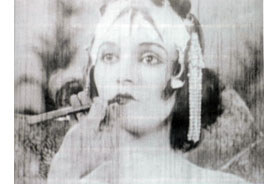 *Condition of the copy: The print is very worn, as the frame reproduced by Die Zeit indicates. Can the torrent of lines and scratches be eliminated? The rescue isn’t likely to be perfect; the damage is perhaps “beyond the reach of our algorithms,” as Martin puts it. To my eye, judging from the Die Zeit frames, many images are lacking in texture and contrast as well.
*Condition of the copy: The print is very worn, as the frame reproduced by Die Zeit indicates. Can the torrent of lines and scratches be eliminated? The rescue isn’t likely to be perfect; the damage is perhaps “beyond the reach of our algorithms,” as Martin puts it. To my eye, judging from the Die Zeit frames, many images are lacking in texture and contrast as well.
*Completeness: Contrary to some reports, virtually all the missing scenes are present on the Argentine print, the single exception being a small portion at a reel end. Among the new sequences are scenes filling in the roles of three characters (Georgy, Slim, and Josaphat), a car journey through the city, and moments of Freder’s delirium.
How can the researchers be confident that the print is so complete? It’s a fascinating story.
Metropolis has been reconstructed many times since the 1960s. In 2001, the Murnau foundation presented a digital restoration of the film supervised by Martin Koerber in collaboration with Enno Patalas. In this version, which is available on DVD (Transit Film, Kino International) about 30 minutes of the original material are missing. In 2003-2005 Enno Patalas and Anna Bohn together with a team at the University of the Arts in Berlin created a “Study Edition” version in which the missing footage was represented by bits of gray leader. For the first time the full length of the film was reconstructed with help from the the original music score.
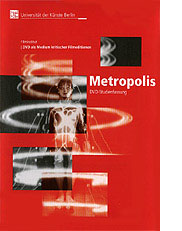 In 2006 a “DVD study edition” was released by the Film Institute of the Berlin University of the Arts (Universität der Künste Berlin; DVD-Studienfassung Metropolis). This scrupulous version includes the original score, a lot of production material, and the complete script by Thea von Harbou. It’s a model of how digital formats can assist documentation of film history. The DVD incorporates production stills and intertitles from the missing scenes, and presents each scene in its original duration (sometimes with only gray leader onscreen). The editors determined the duration of each scene by a critical comparison of the remaining film materials with the music score and other source materials. This DVD edition was released in a limited edition available to educational and research facilities. For information see here or here.
In 2006 a “DVD study edition” was released by the Film Institute of the Berlin University of the Arts (Universität der Künste Berlin; DVD-Studienfassung Metropolis). This scrupulous version includes the original score, a lot of production material, and the complete script by Thea von Harbou. It’s a model of how digital formats can assist documentation of film history. The DVD incorporates production stills and intertitles from the missing scenes, and presents each scene in its original duration (sometimes with only gray leader onscreen). The editors determined the duration of each scene by a critical comparison of the remaining film materials with the music score and other source materials. This DVD edition was released in a limited edition available to educational and research facilities. For information see here or here.
Bohm and Patalas’s comparative method proved itself valid: The Buenos Aires footage fitted the gaps in their study edition perfectly!
A viewing copy will not be forthcoming immediately, given the restoration task, but sooner or later we will have a good approximation of the fullest version of one of the half-dozen most famous silent movies. Getting news like this while among archive professionals is one of the unique pleasures of Cinema Ritrovato. (Special thanks to Dr. Bohn for clarification on several points and to enterprising film historian Casper Tybjerg, who helped me get a copy of the Die Zeit issue.)
Two Davids and a Kevin: Robinson, Brownlow, and Shepard at a critics’ lunch.
Powell meets Bluebeard and Bartók
KT: One of the high points of the week for me was Michael Powell’s 1964 film of Béla Bartók’s short opera Bluebeard’s Castle. It was made for German television and shown in Bologna as Herzog Blaubarts Burg. Unfortunately it was programmed opposite the screening of fragments from Kuleshov’s Gay Canary, but Powell’s post-Peeping Tom films are so difficult to see that I made the difficult choice and gave up hope of seeing the entire Kuleshov retrospective.
Despite being relatively recent in comparison with most of the films shown during the week, Herzog Blaubarts Burg is one of the most obscure. I felt it was an extremely rare privilege to see it, one which I will probably never have again, at least in so splendid a print.
The film belongs to the late period of Powell’s career, after the controversial Peeping Tom had made it impossible for him to work within the mainstream film industry. It was produced by Norman Foster—though not the Norman Foster who directed Journey into Fear and several of the Charlie Chan and Mr. Moto films. This Norman Foster was an opera singer whose stage career was cut short by a dispute with Herbert von Karajan. His widow, Sybille Nabel-Foster, explained this and described how Foster produced and starred in two television adaptations, Herzog Blaubarts Burg and Die lustigen Weiber von Windsor (1966). Foster had originally approached Ingmar Bergman to direct the former, but when that proved impossible, Powell stepped in—and probably a good thing, too. It was definitely his kind of project.
The two performers are perfect for their roles. Foster plays Bluebeard brilliantly, having both a powerful bass voice and the necessary combination of handsomeness and a sense of threat. His co-star, the excellent soprano Ana Raquel Satre, recalls the pale beauties of some of Powell’s earlier films (Kathleen Byron as the increasingly mad Sister Ruth in Black Narcissus, Pamela Brown in I Know Where I’m Going!, and particularly Ludmilla Tcherina in The Tales of Hoffman), but she also bears a resemblance—perhaps deliberately enhanced through costuming and make-up—to Barbara Steele and other horror-film heroines of the 1960s.
The film was shot cheaply in a Salzburg studio, using garish, modernist settings against black backgrounds. These create a labyrinthine, floating space that avoids seeming stage-bound. (Hein Heckroth, the production designer, had previously worked on several Powell films, including The Red Shoes and The Tales of Hoffman.) I was reminded of Hans-Jürgen Syberberg’s Parsifal (1982), which looks somewhat less original in the light of Powell’s film.
As Nabel-Foster explained, after its initial screening on German television, Herzog Blaubarts Burg has been shown seldom because of rights complications with the Bartók estate. Non-commercial screenings have occurred on public television in the U.S. and Australia, but basically the film is off-limits until the copyright expires in 2015, seventy years after the composer’s death. Nabel-Foster has been providently preparing for a DVD release, gathering the original materials.
The print shown was a privately held Technicolor original from the era, in nearly mint condition. (The British Film Institute has a print as well.) The sparse subtitles written by Powell himself were added for this screening.
I’m not convinced that the film is quite the masterpiece that some claim, but it is a major item in Powell’s oeuvre nonetheless, and I felt privileged to have seen it in ideal conditions.
[July 12: Kent Jones, a great admirer of Powell and Bluebeard’s Castle, tells me that he programmed it at the Walter Reade in New York for a centenary retrospective of the director’s work in 2005. Foster’s widow introduced that screening as well.]
Janet Bergstrom and Cecilia Cenciarelli summarize their research on von Sternberg’s lost film The Sea Gull.
1908 and all that
KT: There were several programs of silent shorts, which I could only sample, as they tended to play opposite the Kuleshov films. As usual, the Bologna program included selections of short films from 100 years ago, so we were treated to numerous films from 1908. I was particularly pleased to see The Dog Outwits the Kidnappers, directed by Lewin Fitzhamon, who had made Rescued by Rover two years earlier. That film had been so fabulously successful that it had actually been shot three times as the negatives wore out from the striking of huge numbers of release prints.
The Dog Outwits the Kidnappers at first appears to be a sort of sequel (as it is described in the program), since it stars the same dog (Blair) who had played Rover, and again there is a kidnapped baby. It’s not really a sequel, though, since Cecil Hepworth, who had played the father in the earlier film, here appears as the kidnapper, and the dog is not named Rover. The new film is more fantastical than the original, since the dog races after the car in which the child is abducted and rather than fetching its master, effects the rescue itself by driving the car back home when the villain leaves his victim unattended!
Other 1908 films I particularly enjoyed: In Pathé’s Le crocodile cambrioleur, a thief hides inside a huge fake crocodile and crawls away, creating fear wherever he goes. The Acrobatic Fly by British director Percy Smith, provides a very close-up view of an apparently real fly juggling various small objects. (How was it done? It’s a mystery to me.)
Another retrospective series was “Irresistible forces: Comic Actresses and Suffragettes (1910-1915).” The suffragette films were rather depressing, despite the fact that many were meant at the time to be comic and amusing. Mostly the joke was how masculine these determined women were, a self-verifying proposition when the filmmakers often chose to have the suffragettes played by men. My favorite program was one involving early French female comics. I’ve long been fond of Gaumont’s Rosalie series since seeing a few at an early-cinema conference in Perpignon, France back in 1984. Rosalie, a chubby, cheerful little dynamo played by Sarah Duhamel, was highly entertaining in three films in the “France—Rosalie, Cunégonde et les autres…” program.
As Mariann Lewinsky, who devises these annual series, pointed out, Duhamel is the only early female French comic whose name we know. Léotine, represented here in Rosalie and Léotine vont au théâtre, is played by an anonymous actress. I had not encountered Cunégonde, also anonymous, before, but she proved to be quite amusing as well. I particularly liked Cunégonde femme du monde, where she plays a maid who dresses up as a society lady when her employers go off on a trip; the carefully constructed story and twist ending are impressive for such an apparently minor one-reeler.
It was a treat to see a succession of gorgeous prints of von Sternberg’s films. I particularly enjoyed seeing Thunderbolt (1929) again after many years. Back in 1983 I taught a survey film history course in which I used the director’s first talkie as my example of the transition to sound. Not a good example, I must admit, since Thunderbolt is completely atypical, with its highly imaginative use of offscreen sound. The second half, set primarily in a prison block, involves shouts from unseen cells and a small band that breaks into songs, often completely out of tone with the action, at unexpected moments. Eisenstein and the other Soviet directors would have thoroughly approved of its sound counterpoint. I have to admit that I prefer von Sternberg’s George Bancroft films (Underworld, Docks of New York, and Thunderbolt) to the Dietrich ones. Not only are the plots simpler and more elegant, but they contain a genuine element of emotion that is not, as in the Dietrich series, frequently undercut by irony.
I didn’t make it to many of the CinemaScope films playing on the very big screen in the Cinema Arlecchino theater, but I did enjoy two westerns. Anthony Mann’s Man of the West (1958) and John Sturges’ Bad Day at Black Rock (1954) both looked terrific and were highly popular with everyone we talked to. The latter was particularly a revelation, since in contrast to the Mann, it hasn’t had much of a reputation among cinephiles.
A Rodchenko angle for Yuri Tsivian.
Teacher and experimenter
DB: As Kristin mentioned, we missed a lot of the “Hundred Years Ago” series—a pity, since 1908 is a miraculous year—in order to keep up with one of our favorite directors, Lev Kuleshov.
In the 1960s and 1970s, it was common to say that Eisenstein and Vertov were the most experimental Soviet directors, while the others were more conventional. Then we realized that in films like Arsenal (1928), Dovzhenko had his own wild ways. Then we discovered the Feks team, Kozintsev and Trauberg, and the bold montage of The New Babylon (1929). A closer look at Pudovkin, particularly his early sound films like A Simple Case (1932) and Deserter (1933), revealed that he too was no timid soul when it came to daring cutting and image/ sound juxtapositions. But surely their mentor Kuleshov, admirer of Hollywood continuity and proponent of the simplest sorts of constructive editing, played things safe?
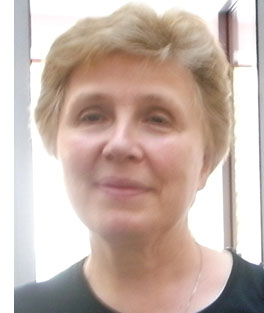 Wrong again. Just as we must reevaluate the other master Soviet directors (even in their purportedly safe Stalinist projects), so too does Kuleshov deserve a fresh look. He got this thanks to Yuri Tsivian, who with the help of Ekatarina Hohlova (right; granddaughter of Kuleshov and his main actress Aleksandra Hohlova) and Nikolai Izvolov, mounted a superb retrospective. It ranged from Kuleshov’s first solo effort, Engineer Prite’s Project (1918) to his final film, the short feature Young Partisans (1942-3, never released).
Wrong again. Just as we must reevaluate the other master Soviet directors (even in their purportedly safe Stalinist projects), so too does Kuleshov deserve a fresh look. He got this thanks to Yuri Tsivian, who with the help of Ekatarina Hohlova (right; granddaughter of Kuleshov and his main actress Aleksandra Hohlova) and Nikolai Izvolov, mounted a superb retrospective. It ranged from Kuleshov’s first solo effort, Engineer Prite’s Project (1918) to his final film, the short feature Young Partisans (1942-3, never released).
My admiration for Kuleshov, confessed in an earlier blog entry, already led me to spot some weirdnesses in Mr. K’s official classics. The Extraordinary Adventures of Mr. West in the Land of the Bolsheviks (1924) boasts some very un-formulaic cutting in certain passages (including an upside-down shot when cowboy Jeddy ropes the sleigh driver), and By the Law (1926) makes chilling use of discontinuities when the scarecrow Hohlova holds the Irishman at gunpoint. But thanks to the retrospective we can confidently say that Kuleshov was no less venturesome, at least in certain projects, than his pupils.
Soviet specialists already suspected that The Great Consoler (1933) was K’s sound masterpiece, and another viewing confirmed it. It incorporates three registers. William S. Porter, in prison but serving in the pharmacy, witnesses brutality and oppression and is driven to drink. Under the name O. Henry he writes cheerfully sentimental tales as much to console himself as to charm readers. His stories are in turn consumed by shopgirls like Dulcie, a romantic who may not realize how unhappy she is. Kuleshov adds a level of sheer fantasy, represented by a pastiche silent film dramatizing O. Henry’s “A Retrieved Reformation,” in which a safecracker trying to go straight reveals his identity by saving a girl trapped in a bank vault. The embedded story features characters from the other two levels, convict Jimmy Valentine and Dulcie’s lover, a vaguely sadistic businessman in a ten-gallon hat.
The Great Consoler reminds us of the popularity of O. Henry in the Soviet Union, both among readers and the Russian Formalist literary theorists, who were fascinated by his flagrant, playful artifice. (Boris Eikhenbaum’s essay on the writer is one of the most brilliant pieces of literary analysis I know.) Even though Kuleshov must denounce Porter for reconciling the masses to their misery under capitalism, the zest of the embedded film and the unique architecture of the overall project pay tribute to another entertainer who did not forgo experimentation. And Kuleshov’s image of a writer in prison probably had Aesopian significance for artists in the era of Socialist Realism.
K’s other major sound experiment, less widely seen, is Gorizont (1932). The title is at once a man’s name and the Russian word for “horizon”—a metaphor literalized in the final shot of a train leaving a tunnel. As Yuri pointed out, it is one of the few Soviet films centered on a Jew, and so the formulaic growth-to-consciousness plotline takes on a new resonance in the light of Slavic anti-semitism. Lev Gorizont is an amiable, somewhat thick young man who dreams of emigrating to the US to make his fortune. But in New York he finds only poverty and disillusionment, eventually returning home to help make a better society. Famous for its use of sound, Gorizont contains a passage of imaginative “counterpoint.” Both Lev and his friend Smith have been jilted by the social-climber Rosie. As they talk, we hear warm piano music, but not until the end of the scene does Smith speculate that probably Rosie is somewhere listening to Chopin. The music has retrospectively functioned somewhat like crosscutting, suggesting that Rosie now lives among the wealthy.
Kuleshov, like Eisenstein, gained his fame for his ideas on editing and sound montage, but both men were deeply interested in performance. Kuleshov’s idea that the film actor should become an angular mannequin carries on the impulse of Meyerhold’s biomechanics, and he anticipated CGI software in suggesting that human action could be plotted on a three-dimensional grid. Still, Kuleshov usually gives his figures a fluid dynamism that doesn’t seem mechanical. The three narrative registers of The Great Consoler are delineated largely through acting: naturalistic and slowly paced in the prison scenes, rigid and posed in the shopgirl romance, and broad and eccentric in the embedded silent movie.
Kuleshov’s performance theories popped out of other films in the series. What survives of The Gay Canary (1929) centers on a cabaret actress courted by lustful reactionaries during the civil war, and her scenes of fury, as she flings around flowers, vases, and pieces of furniture, come off as acrobatic rather than realistic. Naturally, the circus milieu of 2 Buldy 2 (1929) encourages stunts. A father and son, both clowns, are to perform together for the first time, but the civil war separates them, and the elder Buldy, tempted for a moment to acquiesce to the White forces, casts his lot with the revolution. At the climax Buldy Jr. escapes the Whites thanks to flashy trampoline and trapeze acrobatics; the gaping enemy soldiers forget to shoot. Even Kuleshov’s more naturalistic films show flashes of kinetic, stylized acting. A partisan listens to a boy while draping himself over a door. A Bolshevik official answers the phone by reaching across his chest, twisting his body so the unused arm can hike itself up, right-angled, to the chair.
The interaction of the body with props occurs with a special flair in Young Partisans. A Bolshevik partisan tells some children how a boy saved his life in a German-occupied town (This flashback was directed by Igor Savchenko and functions as a short film on its own.) Having learned their lesson, the kids gather in their schoolroom and under the teacher’s eye draw a map of the partisans’ camp. But when Nazi soldiers burst in, the teacher flips the blackboard over; now all we see is algebra.
A scene of Hitchcockian suspense ensues: Will the Germans turn over the blackboard and discover the map? The tension is enlivened by a grotesque moment, when one alcoholic soldier finds a jar holding a pickled frog and decides to drink the formaldehyde. “Draw a map—show me where the partisans are!” the officer demands. He flips the blackboard, and in a split-second we see a boy crouching behind it; the blackboard swings into place toward us, the map now erased. The boy ducks into his seat, brushing off chalk dust.
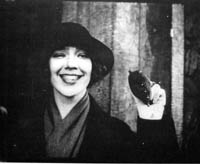 There were plenty of other revelations. We got the reconstructed Prite (was it the first really modern Soviet film?), a bit of an original Kuleshov experiment in constructive editing, and a tantalizing fragment from The Female Journalist (1927), with a surprisingly pensive Hohlova as a modern-day reporter. Sasha (1930), directed by Hohlova herself, was a sympathetic portrait of a pregnant woman. An educational film called Forty Hearts (1930) explained the need to electrify the Soviet countryside and was brightened by faux-naïve animation. Timur and His Crew (1942), with some of the charm of a Nancy Drew movie, showed Young Pioneers helping on the home front; it unexpectedly centered on a girl’s devotion to her military father.
There were plenty of other revelations. We got the reconstructed Prite (was it the first really modern Soviet film?), a bit of an original Kuleshov experiment in constructive editing, and a tantalizing fragment from The Female Journalist (1927), with a surprisingly pensive Hohlova as a modern-day reporter. Sasha (1930), directed by Hohlova herself, was a sympathetic portrait of a pregnant woman. An educational film called Forty Hearts (1930) explained the need to electrify the Soviet countryside and was brightened by faux-naïve animation. Timur and His Crew (1942), with some of the charm of a Nancy Drew movie, showed Young Pioneers helping on the home front; it unexpectedly centered on a girl’s devotion to her military father.
One of the biggest surprises was news of Dokhunda (1936), an ethnographically based fiction set in Tazhikistan. Although the film is lost, Nikolai has reconstructed its plan, revealing that Kuleshov adopted a strange preproduction method. He prepared “living storyboards,” photos of the cast enacting the scenes. He then drew and scratched on them, creating busy, nervous backgrounds or changing the figures’ features and hair styles—Kuleshov as pre-Warhol scribbler, or a graffiti artist tagging his own images.
Nikolai has also finished a DVD edition of Prite that exemplifies what he calls hyperkino, a way of annotating and comparing a film’s images, texts, and supplementary materials for instant access. Another project involves the Yevgenii Bauer classic, The King of Paris (1917), which Kuleshov completed. We haven’t had the intertitles for this, however, but now Nikolai has discovered them, and they will go on the DVD version that is being completed. For more information on these projects and Dokhunda, go to hyperkino.net.
So Kuleshov stands revealed as more supple and ambitious than most of us once thought. Once more Bologna plays to its strengths—filling in gaps but also forcing us to rethink what we thought we knew.
The key issue: What the hell am I going to be seeing now? From left, Olaf Muller, Jonathan Rosenbaum, Don Crafton, Haden Guest, and KT.
So much else to report, so little time. Besides The King of Paris, there was a string of fine 1910s films. Raoul Walsh’s Pillars of Society (1916), while not a patch on his Regeneration of the previous year, offered a solid adaptation of Ibsen. The Dawn of a Tomorrow (1915), James Kirkwood’s Mary Pickford vehicle, seemed to me flat and talky, but others liked it. For me the outstanding item was Paul Garbagni’s In the Spring of Life (1912). Beautifully directed in the tableau style, with precise depth choreography and a stirring scene of a theatre consumed by fire, it starred three men who would become great directors very soon: Sjöström, Stiller, and Georg af Klercker.
Not to mention the von Sternbergs (I liked An American Tragedy much more on this outing), the Scope revivals (Man of the West, Ride Lonesome in a handsome digital restoration from Grover Crisp), my first viewing of Duvivier’s La Bandera (1935), the Monta Bell items (most notably the incessantly energetic Upstage from 1926), and on and on.
What can Gianluca Farinelli, Peter von Bagh, and Guy Borlée, along with their devoted staff members, do for an encore? Bravo! Now take a rest.
Standing Room Only for the rarely seen Children of Divorce (Sternberg/ Lloyd, 1927).
Years of being obscure
DB here:
The Cannes screening of Ashes of Time Redux reminds us that Wong Kar-wai has been an incessant reviser of his work. Versions proliferate in different markets—one for Hong Kong, one for Taiwan, one for the international market—and he has sometimes promised online versions, or bonus DVD features. Buenos Aires Zero Degree (1999) by Kwan Pung-leung, provides tantalizing bits of scenes between Tony Leung Chiu-wai and Shirley Kwan. Yet it makes us wonder about the film we might have had if Wong had not decided to cut the whole plot strand out (after keeping Shirley in Argentina for several weeks).
We can add to the list Days of Being Wild (1990), Wong’s breakthrough movie. It’s been circulated for years in an international version, which is currently available on DVD. But some people people have recalled seeing a fugitive, somewhat hallucinatory cut of the film. Some time ago I examined that alternative, and I figured it’s worth showing what I saw. This rareversion prefigures some aspects of Wong’s later style, particularly as seen in In the Mood for Love (2000). I don’t have solutions to all the puzzles it poses, but I’ve gathered some information. If you know something about this “obscure” version, feel free to write to me and I’ll append your comments to this entry.
I need hardly add that there are spoilers galore here. In the images, differences in tonality and aspect ratio spring from my two sources, DVD and 35mm film (which itself fluctuates a little in aspect ratio from shot to shot).
Last things first
Days of Being Wild begins in 1960 Hong Kong. It follows the wanderings of Yuddy (Leslie Cheung), a preening young man who casually seduces women, notably the brassy Lulu (Carina Lau) and the subdued, naïve Lai-chen (Maggie Cheung). Living with his aunt, Yuddy wonders why his mother abandoned him. He finds her living in the Philippines but doesn’t confront her.
At the climax in Manila, Yuddy meets a sailor (Andy Lau) and picks a fight with local thugs. The two men flee by hopping aboard a train. By chance, the sailor was formerly a Hong Kong cop, who was attracted to Lai-chen. On the train, Yuddy is shot by a vengeful thug. The film concludes with a series of shots of Lulu, Lai-chen, and—the big mystery—a slick young man in a seedy apartment who files his nails, combs his hair, equips himself with handkerchief and cigarettes, and sets out for a night on the town. He doesn’t speak, and he has never appeared in the film before. It’s one of the boldest narrative maneuvers in contemporary cinema, and it has occasioned a lot of comment.
The differences in the final sequences begin on the train. In the international version, a shot of the landscape seen from between the cars is followed by a high-angle medium shot of the cop.
This constitutes a mini-flashback, since Yuddy has already died from the gunshot. The cop’s voice-over initiates the exchange: “The last time I saw him, I asked him a question.” (As usual in Wong’s work, we have no way of knowing whom is being addressed; this could be an inner monologue, a report to an unseen character, or simply a self-conscious address to the audience.) For a little more than two minutes, the camera shows only the cop. He asks if Yuddy remembers what he was doing at a certain time. Yuddy understands immediately that the cop has met Lai-chen, and he replies from offscreen, asking about the cop’s relation to her and asking him to tell her that he, Yuddy, has no memory of her. The cop worries that Lai-chen may not even recognize him.
The exchange ends with a wordless shot of Yuddy sitting against the seat, eyes barely open, as an orchestral version of “Perfidia” rises up. The scene ends with an extreme long-shot of the train. The tune was heard earlier when the cop walked away from a nighttime encounter with Lai-chen, so this refrain reminds us of the cop’s yearning for her.
The alternate version doesn’t alter the overall situation much, but it presents different emphases. After the shot between the train cars, we have an off-center long shot of the cop; it’s then that we get the voice-over: “The last time I saw him, I asked him a question.” Cut to a medium close-up of Yuddy, which replaces the shot of the cop. Now for about two minutes he speaks and the cop’s reactions are kept offscreen.
As far as I can tell at this point, the dialogue is identical. In effect, we have a virtual shot/ reverse-shot exchange between the two films! And instead of holding on the framing of Yuddy, or cutting to the cop’s reaction, Wong simply gives us a shot of the two men in facing seats. This is followed by a very different shot of the train, winding through the sort of greenish-blue foliage seen in a famous earlier shot, and there is no music.
The international version puts the emphasis on the cop, who is both challenging Yuddy and obliquely reflecting on his own situation.; hence perhaps the “Perfidia” theme, which is associated with him. The alternate version keeps us focused on Yuddy throughout, our final stare at him, as it were, before a two-shot reasserts an equivalent weight between the two men, and perhaps their memories as well.
The very end
The variations continue in the final shots. Both versions begin with the shot of Lulu striding to the camera in a telephoto framing, above. Now she’s in the Philippines.
In the international version, this shot is followed by Lulu swanning into a bedroom, hanging up her dress, and saying to the landlady, “There’s someone I want to ask you about.”
In the other version, we see her passing through a somewhat sleazy hotel lobby and asking for a spare room. As a result, it’s somewhat less clear that she’s pursuing Yuddy.
The scene shifts to the stadium where Lai-chen works as a ticket seller. (Stephen Teo’s stimulating book on Wong specifies that it’s the South China Athletic Association.) Customers are swarming in for a football match. The obscure version gives us two quick tracking shots of the crowd, with the second ending on a profile shot of Lai-chen in her booth.
The standard version offers only one of the tracking shots and ends with a static framing of the profile composition. But this version adds a shot, beginning the scene with a head-on composition of her at her window.
At this point the alternate version omits two shots that have attracted a lot of critical commentary. Before the shot of Lai-chen shutting up shop, we see a high-angle view of tramway tracks and a shot of a clock outside the stadium.
The clock shot recalls Lai-chen’s meeting with Yuddy, while the tramcar lines recalls her rainy-night encounter with the cop. Instead of these empty shots, the alternate version cuts from Lai-chen in her booth to a shot of a soccer match, evidently seen through a slot in her cabin.
The rest of what follows corresponds in both versions. Lai-chen is seen reading a newspaper before closing the booth.
Both versions likewise wind down with a shot of the phone booth, the one that Lai-chen and the cop had lingered beside, followed by a closer view of the interior. The phone is ringing.
The first shot of the pair recalls, in its high-angle composition, the rainy night that the two met. (Wong’s characters are haunted by memory, but he forces us to use ours too.)
The cop had asked Lai-chen to call him, and the previous scene showed her closing her window, so we might infer that now she’s trying to get in touch with him—not knowing, as we do, that he’s quit the force, become a sailor, and watched her boyfriend die. But we can’t be sure that she’s the one making the call.
The very last shot, showing Tony grooming, is also the same in both versions. (One stage of it is at the very top of this entry.) It is a real crux. Why is Wong showing us this down-at-heel gambler for two and a half minutes? He has no evident connection to any of the characters we’ve followed, and we will never see him again.
Most critics have also accepted Wong’s explanation that he had planned a sequel, one showing how Yuddy’s influence over others lingered long after his death. Patrick Tam told Stephen Teo that the shot was his idea, a setup or trailer for the next film, turning everything we had seen up till now into a lengthy prologue. (1) But Days of Being Wild was a fiasco at the box office, taking in HK$9.7 million, or about $1.25 million US (in a year in which Stephen Chow’s All for the Winner earned over four times that). So the sequel was never made.
Yet these intriguing circumstances don’t really justify the epilogue’s purposes and effects. A causal explanation doesn’t necessarily yield a functional explanation. What role does this disruptive shot play in the film’s overall dynamic? If Wong had made the sequel, it might have been seen as a brilliant stroke; without the followup film, how can we justify its presence?
It’s reasonable to argue, as Teo does, that this vision of Tony’s primping generalizes Yuddy’s case, suggesting that his rootless narcissism is a condition of many young men of the day. You might also suggest that he provides a sort of male equivalent of the playgirl Lulu; just as the cop played by Andy Lau is a good, though unachieved, match for Lai-chen, Tony would pair up better with Lulu than Yuddy’s pal (Jacky Cheung), who pines for her.
Actually, the alternate version sheds a little light on the problem. It doesn’t provide a definitive answer to what Tony is doing there, but it does offer some tantalizing possibilities. In the alternate version, Tony is not only the last character we see, but the first one. And he’s embedded in a sequence that looks ahead to the style for which Wong has been both admired and castigated.
Languor and ellipsis
After the credits, the international version opens with Yuddy striding forcefully into the soccer stadium and mesmerically flirting with Lai-chen. But the print I examined of the obscure version interrupts the credits and shows us none other than the nameless young spark played by Tony Leung Chiu-wai, buffing his nails. (It seems to be an earlier stretch of the final shot, which continues this action.)
Over his image, we hear this in a male voice (no subtitles on the print):
I saw him one more time. He had just returned from the Philippines. He was much thinner than before. I asked him what happened to him. He replied that he just recovered from his sickness. He didn’t want to chat anyway, so I asked him what his sickness was.
Afterwards, we didn’t see each other any more.
This is very mysterious. Whose voice is speaking—Tony’s, Yuddy’s, Andy Lau’s? I can’t identify it. And who is the he referred to? The most plausible candidate is Andy, who may have returned to Hong Kong; and he is looking fairly ill in the film’s final scenes. But it might be the Tony character, as described by one of the other men, or even at a stretch Yuddy himself, who has somehow survived the shooting and returned to Hong Kong.
These ruminations assume that this opening shot frames a flashback by rhyming with the final image of Tony rising from the bed and dressing for his night out. It provides a sheerly formal justification for the final shot, which now completes the action begun at the start. But substantively, we’re still left with a variant of the original question. Instead of asking why end the movie with this remote character, we now ask why he’s used to frame the movie.
The questions have just begun, however. After this eighteen-second shot of the dapper Tony, we get a music montage lasting about eighty-three seconds. It’s quite perplexing. We’re in a warren of corridors, a bit reminiscent of the byways of Chungking Mansions in Chungking Express, and everything is in slow motion. We follow Andy Lau, in a yellow pullover, striding through the darkness and sweating profusely. Then we find him playing cards with some unidentified men. At one point, we see a woman climb the stairs, at other points we glimpse a man with an enormous snake coiled around him. The sequence ends with shots of a hand seizing a cleaver and shots of Andy, back in the corridor, striding away from us. The whole sequence is accompanied by the song “Jungle Drums,” which continues from the shot in Tony’s apartment but is now sung by a female voice (Anita Mui’s).
I was able to take stills of these shots, so I’ll go through them one by one, despite their iffy quality. (The images are very dark, and the print was worn and a little speckled.) After the opening shot of Tony, we get eighteen shots, all in slow-motion, many out of focus, and nearly all using camera movement. Often the cuts are matched in the normal fashion, but sometimes the connection is purely kinetic. As often in Wong’s work, the timing of the cuts synchronizes with beats or melodic lines in the music.
The first shot shows a woman ascending a staircase (pre-echo of the cheongsams in In the Mood for Love), and we pan quickly to Andy looking up after her before setting out down the corridor, where he passes a man with a snake.
Track left with Andy in medium close-up, wiping sweat from his face, then cut to an out-of-focus shot of him still walking.
Andy rounds a corner and proceeds down the hall, extending his hand to the wall. In one of those pseudo-matches, another hand slides open a door, as if completing his gesture. We see a card game inside. The framing suggests Andy’s point of view, but the camera glides back.
In close-up, a hand holds a cigarette. A slight tilt and rack-focus reveals that the card player is Andy.
Suddenly, there’s an out-of-focus shot of the snake sliding along the man’s arm; the shot lasts only 16 frames, or two-thirds of a second. (Here I go again, frame-counting.) This is followed by a blurry shot, only 19 frames, of Andy turning his head. It’s almost as if the snake-shot had attracted Andy’s peripheral vision.
The man with the snake, still out of focus, rises and goes behind a curtain. Cut to a shot of a light bulb shielded by a scrap of paper, with cigarette smoke wafting up.
A classic misterioso shot: A powerfully built man in a suit, seen from the rear, dominates the composition, and the camera tracks back from him. But instead of revealing his identity, the narration cuts back to Andy, who, out of focus, turns back to the game.
A new phase of the sequence starts. The camera pans up a rock wall, showing water trickling down it. Confirming that we’re back in the corridor, we see a hand seizing a chopper from a wall rack. There’s an odd effect of matching movement, with the pan upward picked up by the upward-lifting movement of the cleaver.
From another angle, the hand draws the cleaver across the frame.
Now we get opposing lines of movement—up and to the right in the first chopper shot, horizontally to the left in this shot. The rhythmic bump is accented by the brevity of the shots (30 frames, 21 frames). At the end of this second shot, we can glimpse someone walking away in the dark background.
The cleaver shots are followed by a close-up of Andy walking along the corridor, much like those at the start of the sequence. The final shot shows him walking far away from us. This take seems to be a continuation of the earlier one, when he put out his hand against the left wall. It fades out as the song does.
After the fade-out of Andy walking down the corridor, the credits resume and the scene introducing Yuddy and Lai-chen begins the main plot.
Wong had used a music montage in As Tears Go By (the remarkable “Take My Breath Away” sequence, which I analyzed in Planet Hong Kong). But there it functioned as a lyrical commentary on a sharply delineated, somewhat conventional narrative situation: Wah visits Ngor in Lantau Island and awkwardly communicates his affection for her. This sequence in Days is puzzling because it doesn’t have very clear narrative import. It does set the mood of languor that dominates the film, but it also hints at a situation of criminal danger (gamblers, the hand with the chopper) that is never actualized in the story that follows.
Coming after the fairly opaque opening shot of Tony, this sequence poses other questions. We’ll later learn that Andy is a diligent patrolman; what’s he doing in this den of thieves? Local audiences would recognize the location as the Kowloon Walled City, a sort of island of sheer criminality in the middle of Kowloon. Was Andy an undercover cop before taking up the uniform?
And who is seizing the cleaver? At first I thought it was Andy, but closer inspection shows that’s not likely; there’s nothing in his hands in the final extreme long-shot. Is someone stalking him? We never find out.
Wong is fond of giving us mere impressions of events, sometimes linked to characters’ consciousness, sometimes soaring cadenzas of images blended with music. But unlike the music montage of As Tears Go By and those in later films, this one is almost indecipherable in story terms. Nothing else in Days of Being Wild is as free-form as this stretch of footage. It can stand as an emblem and limit-case of Wong’s interest in using genre conventions poetically, and his reluctance to pay them off in plot terms.
Partial solutions, more mysteries
Back in 2001, Shelly Kraicer, impresario of the Chinese Cinema List, wrote about having seen this version, and several people chimed in with their recollections and opinions. In 2004, I asked several Hong Kong friends about it. Filmmaker, critic, and educator Shu Kei, who has a long memory for Hong Kong film, replied:
I remember the footage you describe. If I’m right, this was the version WKW re-edited after the disastrous midnight premiere of the film, and it was the “official released version” for the regular shows in the following week.
Days was released on 15 December 1990 and played until 27 December, so perhaps this was indeed the version that was seen in its Hong Kong run. In 2001 correspondence on Shelly’s list, Bérénice Reynaud, who saw the “pre-premiere version” of a print straight from the lab, was “positive” that the prologue material was not in that print.
Shu Kei offers some further information about the gambling sequence:
The shots with Andy Lau in a card game and fighting afterwards [sic] were done in a very early stage of the film’s lengthy shoot, in which Lau was playing a gangster-like character in the Kowloon Walled City. (The role, and much of the original concept of Days of Being Wild, were reprised in Jeff Lau’s Days of Tomorrow, 1993.) Andy’s character was later changed to that of a cop.
Two other Hong Kong observers told me that the revised version was designed to make sure that the big stars Tony Leung and Andy Lau had early and prominent entrances, since without the prologue, they play minor roles. Michael Campi reported in the 2001 correspondence: “I was told that in a frantic attempt to retrieve some revenue from the film, it was decided crassly to include Leung Chiu-wai in the opening as well as the closing.”
If this was the strategy, it’s reminiscent of the changes made to the international (originally, Taiwanese) version of Ashes of Time, with the prologue and epilogue showing explosive fighting scenes. Those passages were designed, explains Hong Kong Film Festival programmer Li Cheuk-to, to assure viewers that there would be swordplay in this rather talky movie.
Things are far from settled, though. The prologue is a major crux, but assuming that the last reel I saw was that of the 1990 retooled version, how do the circumstances outlined above explain the disparities in the endings? Why would audience dissatisfaction or producers’ demands force Wong to eliminate the empty shots of the stadium and the clock? Or substitute a different (and more opaque) scene of Lulu in the Philippines? Or change the découpage of the train dialogue between Yuddy and the cop? Or supply a different long shot of the train? Or eliminate the haunting “Perfidia” theme?
Moreover, we still don’t know what the premiere version screened at midnight shows was like. Was it congruent with today’s international version, or was it yet a third variant? In other words, did Wong un-revise the original, or re-revise it? At what point did he or his distributors replace the obscure version with the one in general circulation?
Earlier in June our blog discussed Grover Crisp’s visit to Madison, in which he argued that in an important sense every film exists in alternative versions. We simply have to accept that. It’s especially true of Hong Kong films, which are recut for circulation in many markets. And I like knowing that there’s an especially puzzling variant of Days of Being Wild—one that lets us imagine virtual narrative possibilities and adds to the appeal of this enigmatic movie. Nonetheless, I’d welcome more information about all this, especially from Wong Kar-wai himself.
(1) Stephen Teo, Wong Kar-wai (London: BFI, 2005), 45.
Thanks to Alex Wong for translating the prologue’s voice-over narration for me.












